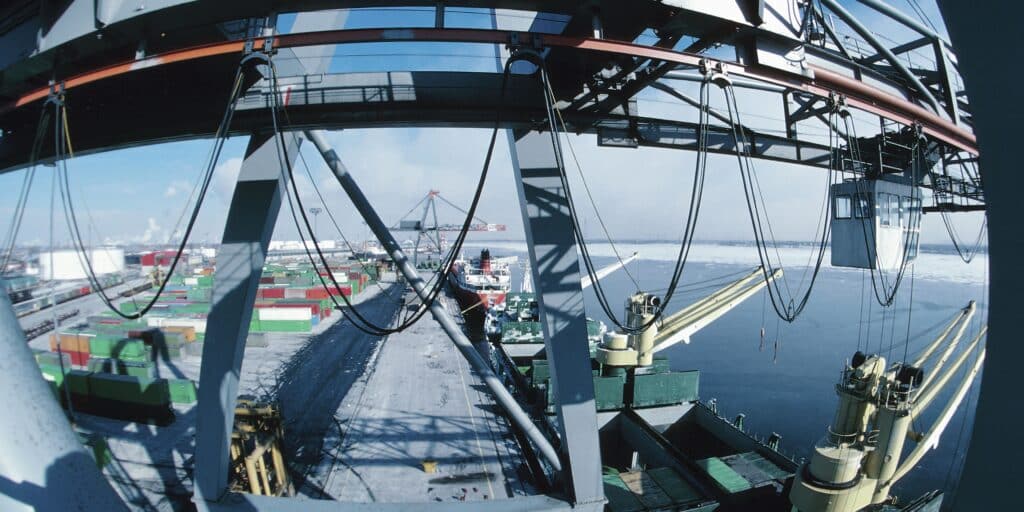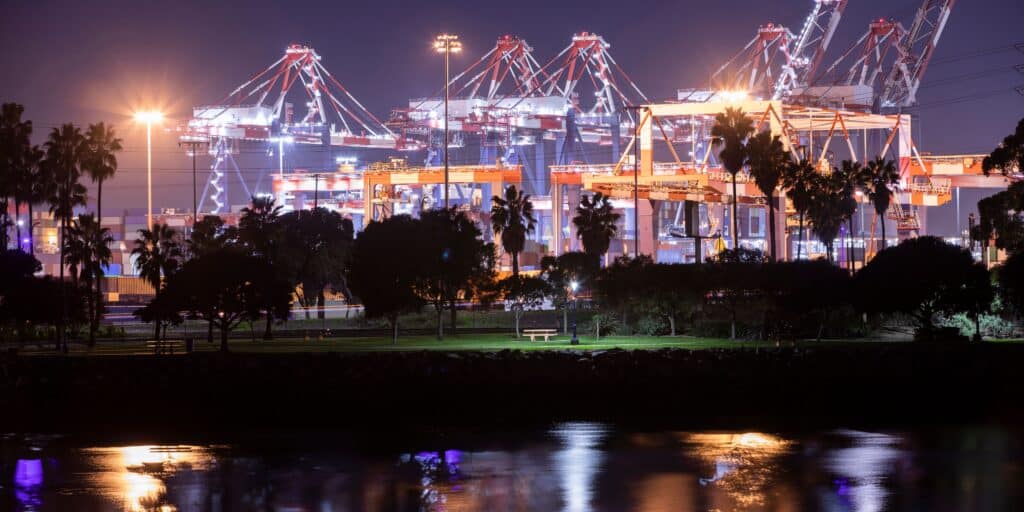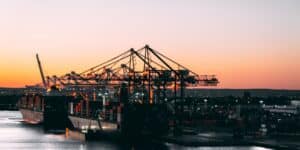Ports are the beating heart of global trade, like arteries that keep goods flowing across continents. Since 90% of goods are transported by sea, these vital hubs shape global commerce, influencing both the accessibility of necessities and economic stability. Today, over 800 major seaports worldwide facilitate the seamless transportation of products and ensure a smooth, efficient supply chain. Which are the biggest port operators managing these crucial trade hubs?
The Leading Port Operators and Their Market Influence
From the arrival of cargo ships to the final delivery of products, port operations encompass a wide range of activities, including vessel berthing, cargo unloading, container handling, customs inspections, and inland transportation. The efficiency of these processes directly impacts product availability, delivery speed, and overall costs.
List of the Top 10 Biggest Port Operators
Port operators are key players in the maritime industry, overseeing a vast network of services such as terminal management, cargo handling, logistics, and freight forwarding. These companies are integral to international trade, ensuring the smooth movement of goods across borders. Listed below are the world’s biggest operators that manage port infrastructure and optimize supply chain efficiency.
1-PSA International
PSA International is a leading port operator and the world’s busiest transshipment hub. It is a crucial gateway connecting Singapore’s economy to global commerce networks. Based in Singapore, the firm is committed to ensuring resilient, efficient, and sustainable cargo movement. In 2024, PSA Singapore achieved a record-breaking milestone, handling over 40 million TEUs, surpassing its previous high of 38.8 million in 2023.
2-China Merchants Port Holdings
China Merchants Port Holdings Co Ltd, based in Hong Kong, China, operates a geographically diverse port network. Its terminals span China’s coastline and extend to overseas markets. The company’s core segments include container, bulk, and general cargo operations. Additional activities encompass bonded logistics, property investment, and logistics park management. As of February 21, 2025, its market capitalization is $6.88 billion.
3-COSCO Shipping Ports Limited
COSCO Shipping Ports Limited is a major port operator and investor with a strong presence in China and international markets. Its primary business segments include terminal operations and related services, which generate the majority of its revenue. The firm operates a geographically diversified network of terminals, spanning Mainland China, Europe, and other key regions. As of February 21, 2025, it has a market capitalization of $2.18 billion and 3.76 billion outstanding shares.
4-Hutchison Port Holdings Limited
Headquartered in Hong Kong, China, Hutchison Port Holdings Limited is a major operator of deep-water container ports, with a strong presence in both Hong Kong and Mainland China. The corporation specializes in port investments, development, and management, supporting commerce through its extensive terminal network. It also provides transportation, logistics solutions, and port-related solutions, which constitute much of its revenue. As of February 2025, its market cap is $1.39 billion with 8.71 billion shares.
5-DP World
DP World is a leader in port operations and logistics, managing a vast network of terminals across 78 countries. In 2024, the firm handled a record 88.3 million twenty-foot equivalent units (TEUs), marking an 8.3% year-on-year increase despite economic challenges. Headquartered in Dubai, United Arab Emirates, it focuses on innovation, sustainability, and integrated supply chain solutions to enhance efficiency and customer service.
6-Terminal Investment Limited (TIL)
Since its inception in 2000, Terminal Investment Limited has grown into one of the world’s largest and most geographically diversified container terminal operators. With material equity interests in 23 operating terminals and five greenfield projects across 18 countries on five continents, TIL plays a crucial role in global commerce. Seven of its terminals are among the 20 largest ports by annual container volume, reinforcing its strategic importance. Located in Geneva, Switzerland, the firm’s revenue stands at $12.8 million, reflecting its strong market presence.
7-APM Terminals
APM Terminals, a subsidiary of Maersk’s Transport and Logistics division, is a leading firm headquartered in The Hague, Netherlands. With operations spanning 74 port and terminal facilities across 38 countries on five continents, the company specializes in container management, integrated cargo solutions, and inland services.
8-CMA CGM
CMA CGM, named after its predecessor companies Compagnie Maritime d’Affrètement (CMA) and Compagnie Générale Maritime (CGM), is a leader in shipping and logistics. Headquartered at the CMA CGM Tower in Marseille, France, the corporation operates across 160 countries with a network of 400 offices and 750 warehouses. Its core business includes shipping, port operations, supply chain management, and warehousing. In the third quarter of 2024, CMA CGM reported a revenue of USD 15.8 billion, a 38.5% increase compared to the same period in 2023.
9-Evergreen Marine Corporation
Evergreen Marine Corporation (Taiwan) Ltd is a leading provider of global shipping and logistics operations specializing in container transportation, shipping agency operations, vessel maintenance, and container distribution. The corporation’s core revenue comes from its extensive fleet of cargo ships, facilitating trade across Asia, the Americas, Europe, and Taiwan, with Asia being its primary market. Operating a vast service network across five continents, the Taipei, Taiwan-based firm manages and deploys over 200 full-container vessels worldwide.
10-International Container Terminal Services, Inc. (ICTSI)
International Container Terminal Services, Inc. (ICTSI) is one of the world’s leading independent terminal operators, managing a diverse portfolio of ports across six continents. Headquartered in Manila, Philippines, the great firm operates 32 terminals in 18 countries, supporting trade with approximately 13,000 employees. ICTSI continues to expand its footprint through strategic investments in port infrastructure and technology.

Market Share and Throughput Capacity
Top shipping logistics companies boost market dominance by expanding throughput and optimizing container handling. Major hubs like Shanghai process millions of TEUs annually, showcasing maritime leadership. Key operators invest in automation, infrastructure, and strategic partnerships to enhance efficiency. Across Southeast Asia, Latin America, Africa, container
Geographical Distribution of Major Port Operations
The Asia-Pacific region led global container throughput, handling 517 million TEUs -60 % of the total. Europe, the Middle East, and Africa managed 20%, while the Port of Los Angeles processed 9.9 million TEUs in 2022. China’s major ports, including Ningbo-Zhoushan and Shenzhen, consistently rank among the busiest, reinforcing the region’s dominance in maritime trade.
Trends Shaping the Port Industry
For those involved in port operations, policymaking, or the broader marine sector, staying informed about these evolving changes is essential to navigating future challenges. Adapting to emerging trends while ensuring smooth daily operations is key to maintaining competitiveness, meeting customer expectations, and fostering long-term growth.
Recent Trends in the Industry
Trends drive innovation, influencing how industries evolve and adapt to new challenges. Which emerging trends are shaping the industry?
Automation Enhancing Efficiency
Advancements in robotics and artificial intelligence are transforming how ports function. Automated cranes, self-driving transport vehicles, and AI-powered scheduling systems are increasing speed and reducing human error. These innovations minimize congestion, improve safety, and enable round-the-clock activity, making ports more productive than ever.
Digitalization for Smarter Management
The adoption of smart technologies is streamlining processes, allowing for better coordination and real-time decision-making. Cloud-based platforms, predictive analytics, and Internet of Things (IoT) solutions provide greater visibility into supply chains. These tools help reduce delays, improve asset tracking, and enhance communication across different stakeholders.
Sustainability as a Driving Force
Environmental concerns are shaping the future of port management. Shore power systems, electrified equipment, and alternative fuels like hydrogen and LNG (liquefied natural gas) are reducing emissions. Investments in green infrastructure and waste reduction initiatives also help to align port activities with global sustainability goals.
The Role of Mega-Terminals in Global Trade
Mega-terminals are large-scale port facilities designed to handle massive volumes of cargo efficiently. These terminals are equipped with advanced technology, high-capacity cranes, and extensive storage areas to accommodate the growing demands of global shipping. Strategically located in high-traffic regions, mega-terminals connect major shipping routes, facilitating seamless transfers between sea, rail, and road transport. Here are two great ports that exemplify efficiency and innovation in modern shipping.
Shanghai Yangshan Deep-Water Port (China): One of the world’s busiest and most advanced mega-terminals, equipped with automated cranes and AI-driven systems to optimize cargo handling and reduce delays.
Port of Rotterdam (Netherlands): A major European hub that integrates smart technology, automated guided vehicles, and a deep-water harbor to handle high cargo volumes efficiently.
Sinay's Technologies for Monitoring and Efficiency
We specialize in data collection, real-time monitoring, and environmental impact assessments for offshore wind farms, providing precise insights for better decision-making and efficiency. Our innovations include Metocean Analytics for accurate weather and ocean hindcast, reducing disruptions and costs. With maritime data expertise, we ensure reliable environmental monitoring and real-time compliance tracking. The Safecube platform optimizes supply chains with real-time shipment tracking across 180 carriers, minimizing delays. Passive Acoustic Monitoring (PAM) detects underwater noise and marine mammals, promoting sustainability. Our advanced analytics enhance efficiency, mitigate risks, and support sustainable offshore operations.
FAQ for biggest port operators
Success depends on network reach, technological investments, automation, cargo handling efficiency, and strategic partnerships to streamline global trade.
Most leading operators manage Asian, European, and Middle Eastern ports, with expanding operations in Africa and Latin America due to growing trade demand.
They invest in smart terminals, AI-driven logistics, digitalization, and automation to enhance cargo movement and reduce turnaround times.



